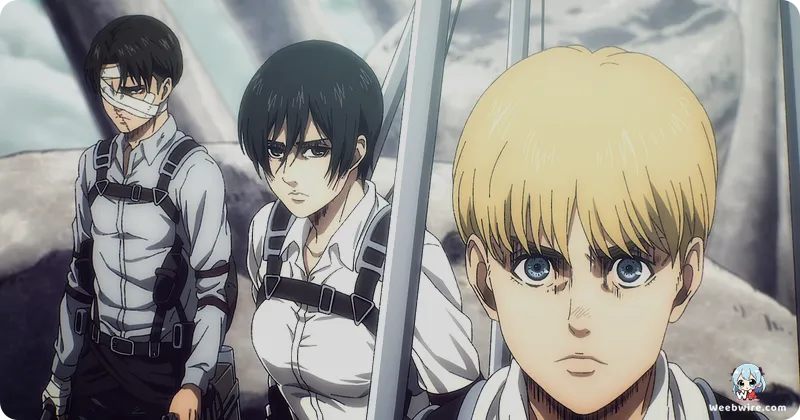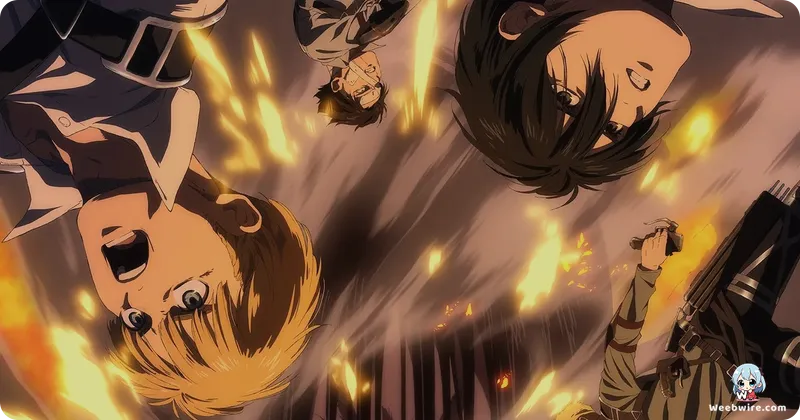The Unseen Threads: Revealing the Hidden Lore and Creative Genius Behind Attack on Titan

As the monumental saga of Attack on Titan dramatically approaches its ultimate conclusion, with Attack on Titan Final Season THE FINAL CHAPTERS Special 1 setting a breathtaking stage, fans globally are reflecting on the unparalleled journey this series has offered. Beyond its gripping action and complex narrative, the world of Attack on Titan is a rich tapestry of fascinating, often lesser-known, facts and trivia that profoundly deepen appreciation for Hajime Isayama's masterwork and MAPPA's stellar adaptation. These insights not only illuminate the creative genius behind the series but also enhance our understanding of its profound impact on the anime landscape.
The Unsettling Genesis of the Titans
One of the most surprising insights into the genesis of the terrifying Titans comes directly from creator Hajime Isayama himself. These colossal, human-eating giants weren't born from ancient mythology or elaborate fantasy lore, but from a strikingly mundane, yet deeply unsettling, real-world encounter. Isayama once described an experience with a large, intimidating, and uncommunicative drunk customer at a net cafe. This seemingly ordinary interaction planted the seed for the Titans – creatures that, despite their grotesque human-like form, lack comprehensible communication and empathy, embodying a primal, uncontrollable fear. This personal anecdote reveals the grounded, psychological horror that underpins the series' fantastical elements, making the Titans not just monsters, but reflections of a very human sense of dread and helplessness in the face of the incomprehensible.
Walls of Confinement: A Reflection of Reality
Further shaping the world of Attack on Titan was Isayama's own upbringing. Growing up in a rural Japanese town, Hita, surrounded by mountains, Isayama often felt a profound sense of confinement. This feeling directly inspired the iconic walled cities where humanity sought refuge from the Titans. The palpable sense of claustrophobia and the yearning for freedom beyond the walls is not just a clever plot device; it's a direct reflection of the author's own lived experience. This personal connection imbues the narrative with a profound sense of realism and emotional depth, allowing viewers to truly empathize with humanity's desperate struggle for liberation and their innate desire to explore the unknown world outside their protective barriers.
Evolving Protagonists: Eren and Levi's Design
Delving into character development, it's intriguing to note that Eren Yeager, the hot-headed protagonist, was initially conceived as a much quieter, more subdued character. Isayama pivoted from this initial concept, believing a more passionate and proactive lead would better propel the story and challenge the static nature of the world. This crucial alteration ensured Eren would actively shape events, leading to his complex and often controversial trajectory in later arcs, brilliantly animated by MAPPA. His journey from a vengeful boy to a figure of immense power and moral ambiguity is a testament to this early creative decision.

Similarly, fan-favorite Captain Levi Ackerman, renowned for his unmatched combat skills and obsessive cleanliness, was intentionally designed to be notably short. Isayama found the contrast between Levi's formidable power and his unassuming stature to be an engaging and unique character trait. This deliberate choice subverts typical hero archetypes, making Levi's strength all the more impactful and his quirks endearing. His compact frame belies a terrifying efficiency in battle, making him one of the most compelling and beloved characters in the series.
The Voice Behind the Fury: Yuki Kaji's Dedication
Voice actors, too, have shared profound immersion in their roles, adding layers of authenticity to the characters. Yuki Kaji, the voice of Eren Yeager, frequently spoke about the immense mental and emotional toll of portraying Eren, especially as the character descends into moral ambiguity and faces increasingly difficult choices. Kaji's dedication, including recording some emotionally charged scenes in isolation to capture the raw intensity of Eren's internal struggles, undeniably contributes to the visceral and deeply moving portrayal of Eren's complex journey, which reaches its zenith in THE FINAL CHAPTERS Special 1. His performance is a cornerstone of the anime's emotional resonance.
Symbolism and Sound: Birds and Sawano's Score
A subtle yet powerful recurring motif throughout the series is the image of birds. From the very first opening sequence to pivotal moments in the final arcs, birds symbolize freedom, escape, and often, an omniscient perspective. As Eren's understanding of the world expands and his actions take on global implications, the avian imagery becomes increasingly significant, representing both the dream of a world without walls and the complex, often tragic, nature of true liberation. This visual metaphor beautifully encapsulates the core themes of the narrative.
Finally, the iconic musical score by Hiroyuki Sawano is a character in itself, elevating every scene it accompanies. Sawano is known for incorporating unique vocal inserts with lyrics, often in German or English, directly relating to the anime's themes or specific character arcs, without being literal translations of dialogue. Tracks like "Vogel im Käfig" (Bird in a Cage) or "Call Your Name" use their evocative lyrics to deepen the narrative context, foreshadow events, or express internal struggles, enriching the viewing experience and solidifying Attack on Titan's place as a masterpiece of storytelling and sound design. These intricate details, from character conception to symbolic imagery and a breathtaking score, underscore the rich tapestry that is Attack on Titan, making its final moments all the more impactful and memorable for fans worldwide.
Credits
Attack on Titan Final Season THE FINAL CHAPTERS Special 1
Author
Hajime Isayama
Cover Art
Tomohiro Kishi
Studio
MAPPA
Publisher
Kodansha
Producers





